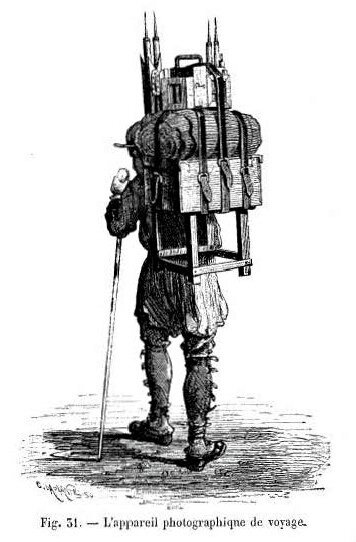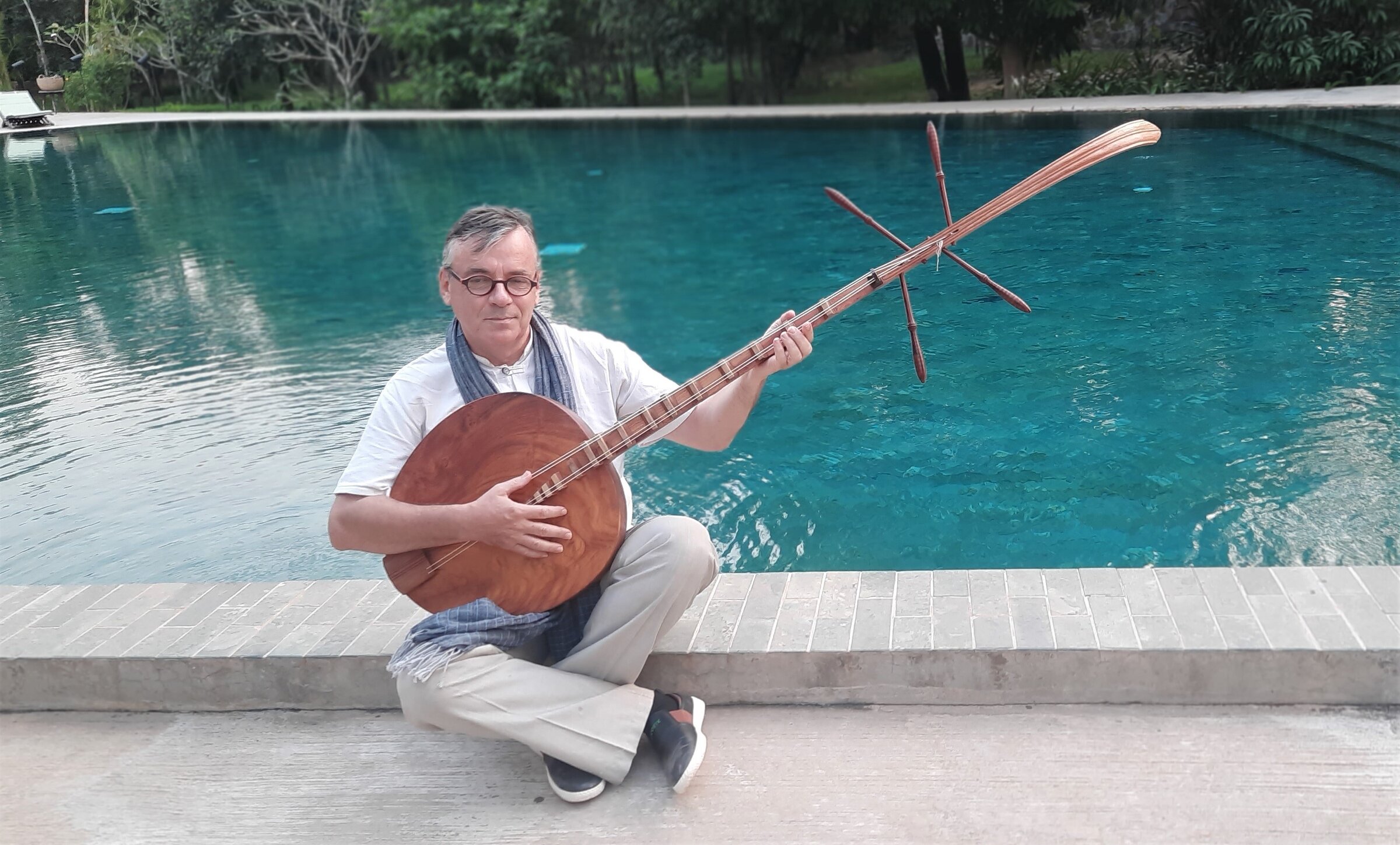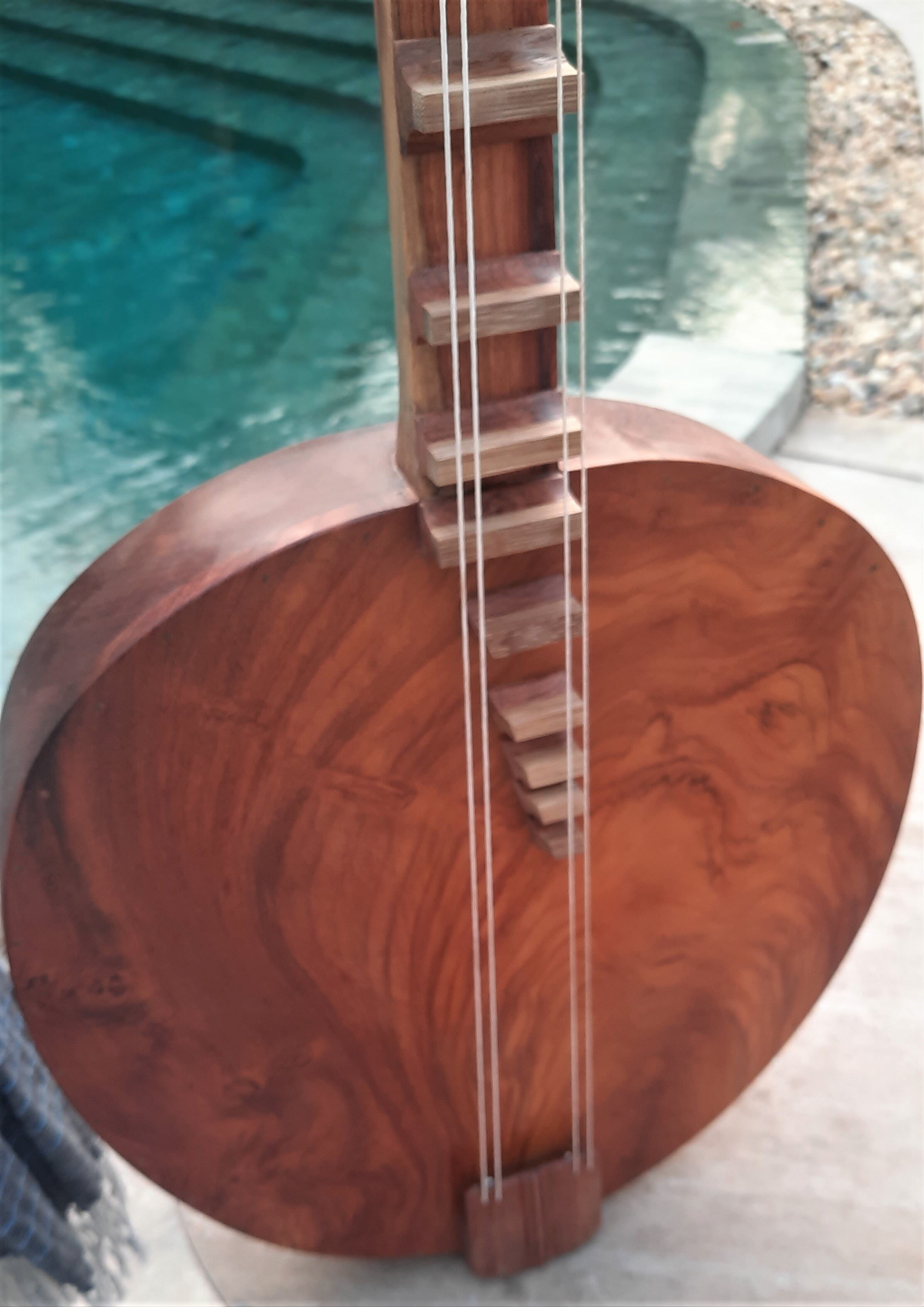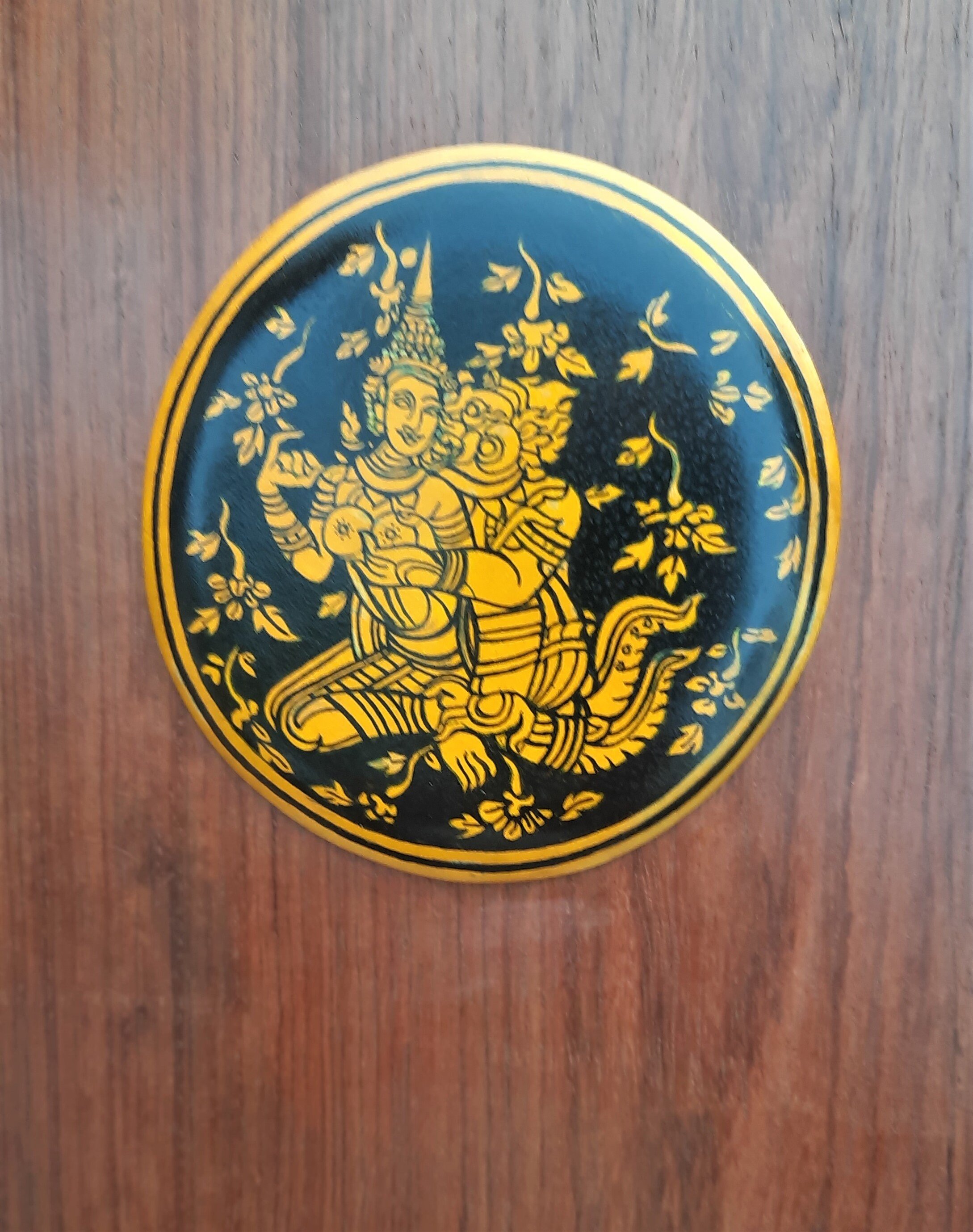In the Footsteps of Émile Gsell, First Mission at Angkor Wat, 1866
by Patrick Kersalé
Wet-Collodion photo-processing and Angkor seen by pioneer photographer Émile Gsell.
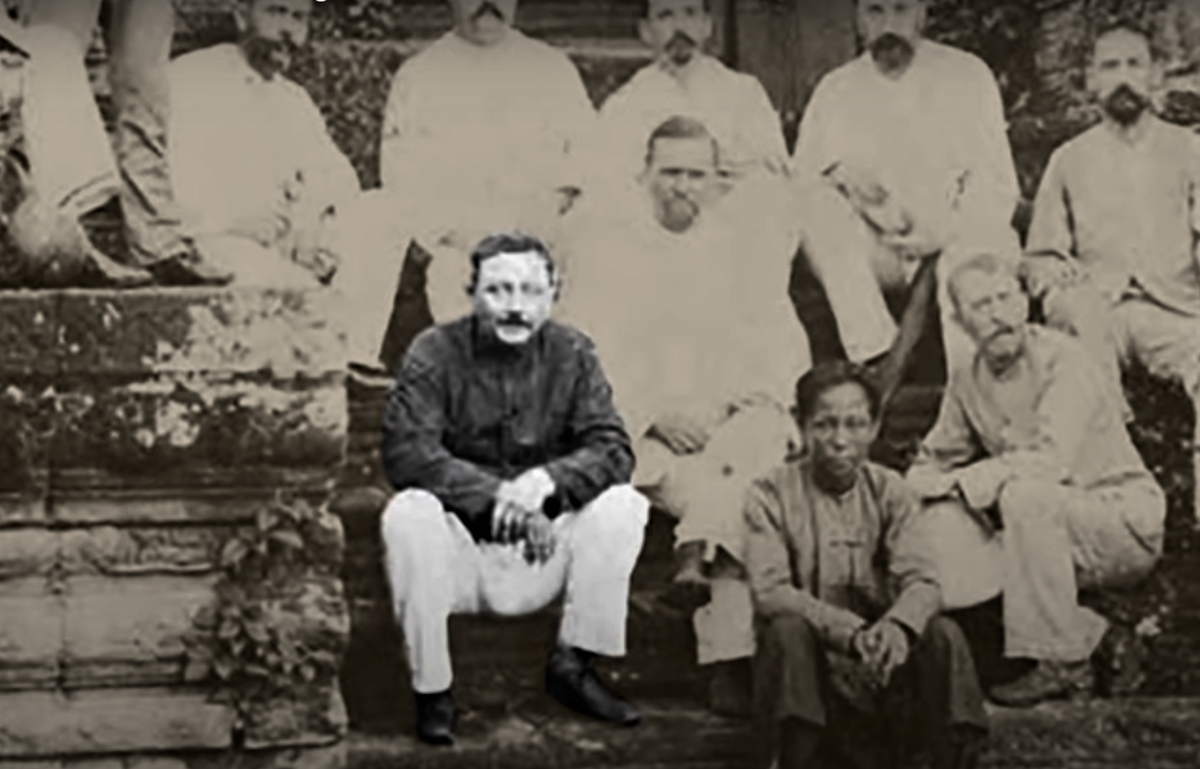
- Published
- April 2021
- Author
- Patrick Kersalé
- Languages
- English, French
With this short film (Tuk-Tuk and Sounds of Angkor Production), author Patrick Kersalé continues his exploration of the life and work of Émile Gsell, here during his first visit to Angkor in 1866, part of the explorative Mission Doudart de Lagrée.
The technique and modus operandi of Gsell in Angkor are carefully reconstructed by replacing his earliest wet-collodion silver plates into the actual context of the temples nowadays. The author had previously elaborated on the portable laboratory Gsell was using while working at the Angkor site.
Angkor Database input: Meanwhile, the photographic equipment used by Scottish photographer John Thomson, who preceded Gsell in Angkor by a few months, remains relatively unknown. Neither Thomson’s own account or the report by H.G. Kennedy mentioned the type of camera and processing laboratory used during his journey across Cambodia. According to the website of The National Library of Scotland, “Thomson used a variety of cameras, both full-plate and stereo, although none of his instruments have survived. They had to be strong and relatively portable, and were made from hard woods to withstand tropical climates.”
Interestingly, Thomson translated into English (in 1876) the major work on the History and Practice of Photography by Gustave Tissandier (1843−1899), published in French two years earlier (Les merveilles de la photographie, Paris, Hachette, 1874, 328 p), and that essay gives us a detailed description of what was the typical equipment of the “traveling photographer” in the second half of the 19th century.
According to Tissandier (pp 130 – 34), ‘en voyage, on n’a plus le cabinet noir de l’atelier photographique. Il faut y suppléer en transportant une tente de voyage qui se démonte avec autant de facilité que celle de nos soldats. Elle peut, si elle est bien constituée, être dressée en un quart d’heure (…) Le laboratoire nécessaire au photographe en campagne est tout entier contenu dans une boîte a compartiments où sont emprisonnées les cuvettes en gutta-percha destinées au fixage, le bain d’argent, les entonnoirs, les réactifs, les châssis pour la chambre noire, des papiers buvard, des filtres, des fioles de collodion, etc. L’artiste en voyage pourra reproduire avec assez de facilité, s’il est bon opérateur, les monuments, les constructions en général; mais s’il veut aborder la nature, s’il tient surtout à faire des études de ciel, à fixer sur le collodion les effets de nuages qui ornent le paysage, il rencontrera des difficultés bien faites pour l’arrêter si sa persévérance n’est pas à la hauteur de son désir de bien faire (…) La photographie, considérée sous ce point de vue, peut revendiquer sa place parmi les arts, car un tel tableau de la nature (…) devra à juste titre être considéré comme une reproduction artistique.’ (1)
Portable Photographic Equipment, drawing by Gustave Tissandier (from the digital version by CNAM-Conservatoire Numérique)
(1): ‘While traveling, we no longer have at our disposal the darkroom of any photographic studio. One must make up for it by transporting a travel tent that can be dismantled with as much ease as that of our soldiers. It can, if it is well conceived, be set up in a quarter of an hour (…) The laboratory needed by the field photographer is entirely contained in a box with compartments receiving the gutta-percha cuvettes for processsing, the silver bath, funnels, reagents, darkroom frames, blotting papers, filters, collodion vials, etc. The traveling artist will be able to reproduce with sufficient facility, if he is a good operator, monuments and constructions in general; but if he wants to capture nature, if he especially intends to study the sky, to fix on the collodion the effects of clouds which adorn the landscape, he will encounter many difficulties if his perseverance does not match its desire to do well (…) Considered from this point of view, photography can claim its place among the arts, since such a picture of nature (…) should rightly be considered an artistic reproduction.’
Photo: Émile Gsell among other members of the Mission Doudart de Lagrée, 1866 (photo editing Sounds of Angkor)
Watch the English version of the documentary ‘Émile Gsell and The Musicians of King Norodom’.
Tags: early explorers, photography, portable photographic laboratory
About the Author
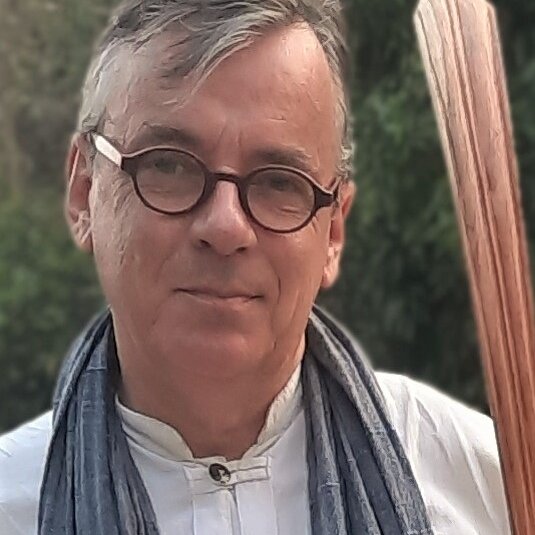
Patrick Kersalé
Ethnomusicologist and music archaeologist Patrick Kersalé (1959, Nantes, France) has spent the past 30 years traveling around the world (primarily in West Africa, Southeast Asia, India, Nepal and Europe) in order to seek traditional music at risk of disappearing in order to preserve the memory and to develop programs for cultural conservation.
Patrick Kersalé has carried out many missions in Cambodia in order to collect audiovisual footage at archaeological sites, as well as music from ethnic minorities across Ratanakiri and Mondulkiri provinces. SInce 2009, he has studied the musical instruments from the Angkorian era, through the iconography, inscriptions and archaeological objects. Based on that research, he has rebuilt extinct instruments from the 7th to 16th centuries. Several kinds of harps, zithers, cymbals, drums, trumpets, and conchs have thus literally been brought back to life.
During the last four years, he reconstitued a wooden chapei dang veng (lute) from a photograph of a female lute player taken by Emile Gsell circa 1866 in Phnom Penh, and finding a similar musical instrument from that period at the Music Museum (Musée de la Musique) in Paris.This labor of love, an exercise in historic research and technical prowess, is narrated here.
Patrick Kersalé is also the author of numerous CDs, mostly on the music of ethnic minorities, several books with CD on oral traditions, documentaries, educational DVDs, and articles.
Patrick Kersalé with his chapei in Siem Reap, Feb. 2021. Below, details of the musical instrument:

